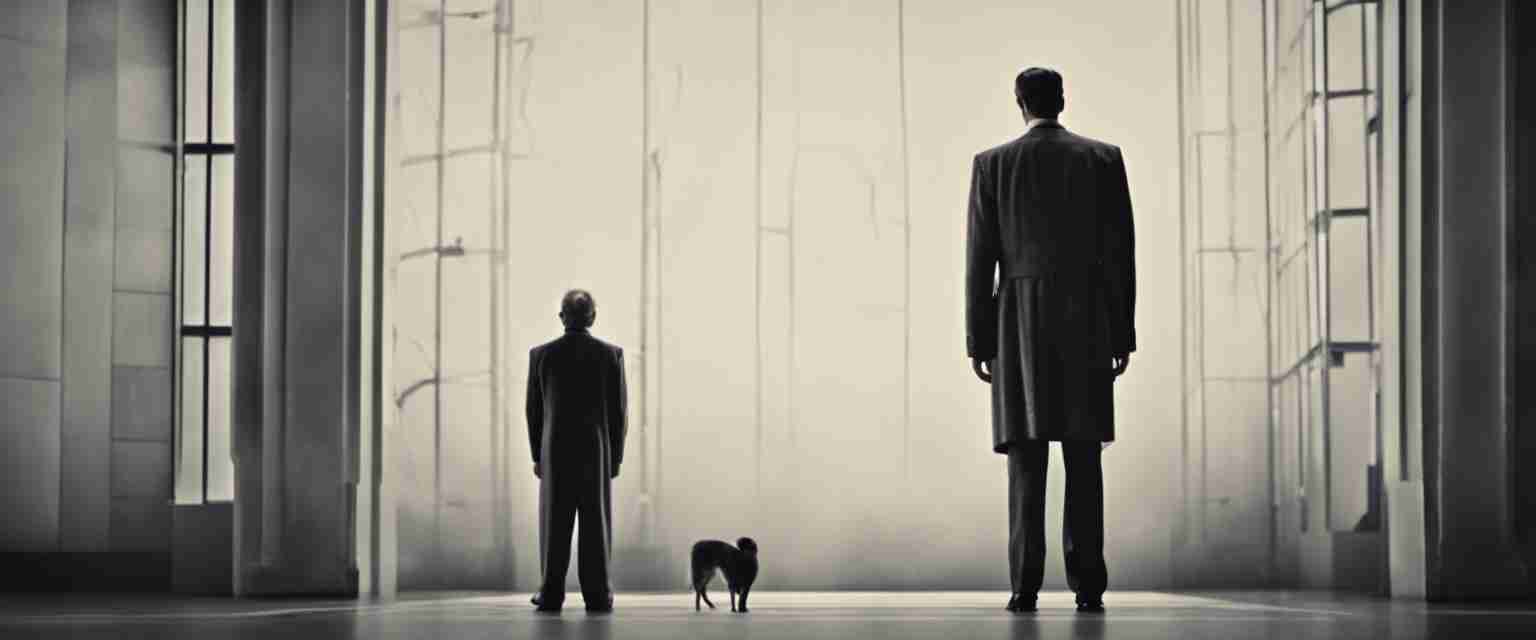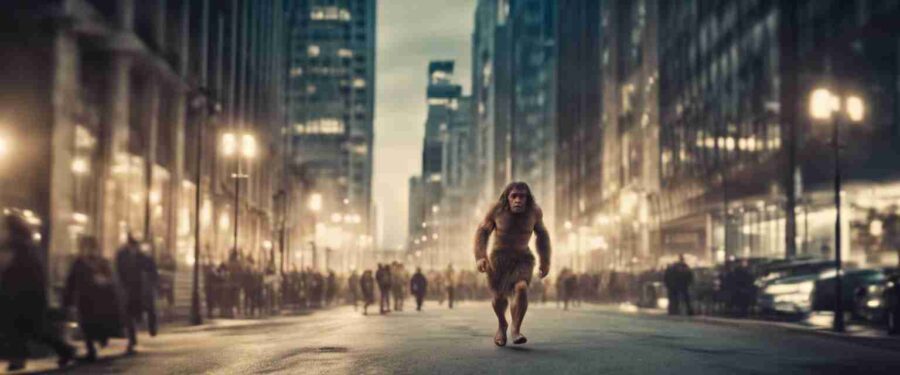Definition: Juxtaposition is a literary device used across various art forms like films, photography, literature, and paintings. It involves placing two or more contrasting elements close together to highlight their differences.
For example, in Charles Dickens’s “A Tale of Two Cities,” the opening lines, “It was the best of times, it was the worst of times, …” juxtapose the extremes of human societal conditions before and during the French Revolution.
Juxtapositions such as oxymorons are part of the broader category of figures of speech.
Table of Contents
Different kinds of Juxtaposition

Juxtaposition helps develop comparisons and contrasts and can add an element of irony or humor. There are several kinds of juxtaposition based on what elements are being contrasted.
Here are some of the main types:
| Type | Description | Example |
|---|---|---|
| Character Juxtaposition | Placing two characters with opposing traits or ideologies close together to highlight their differences. See also foil characters in film. | Harry Potter and Draco Malfoy from the “Harry Potter” series by J.K. Rowling. |
| Setting Juxtaposition | Contrasts two different settings to emphasize their differences or to highlight the impact of these environments on characters and events. | In ‘The Wizard of Oz,’ the drab, colorless Kansas is juxtaposed against Oz’s vibrant, magical land. |
| Idea or Theme Juxtaposition | Opposing ideas or themes are placed close together to highlight their conflict or to provoke thought. For example, life and death, innocence and corruption, or freedom and captivity can be juxtaposed to explore complex themes in a narrative. | “The Social Network” (2010) explores the paradoxical theme of social connectivity and human isolation within the context of the creation of Facebook. |
| Time Juxtaposition | Contrasting different times, such as the past and the present, to highlight change or stasis. Time juxtaposition can be used to create a sense of nostalgia, critique the present, or show development. See also flashbacks in film. | “Eternal Sunshine of the Spotless Mind” (2004) utilizes temporal juxtaposition and a nonlinear narrative as Joel undergoes a procedure to erase memories of his ex-girlfriend, Clementine. This juxtaposes the joyous beginnings with the painful end. |
| Tonal or Mood Juxtaposition | Juxtaposes different tones or moods, such as humor and seriousness or happiness and sadness, often to create a complex emotional response or to highlight the multifaceted nature of situations or characters. | “Life is Beautiful” (1997) presents one of the most striking juxtapositions of tone by mixing comedy and tragedy. Set against the backdrop of the Holocaust, we follow Guido, who uses his imaginative powers to shield his son from the horrors of their concentration camp imprisonment. |
| Action Juxtaposition | Contrasts different actions or events to highlight their differences or similarities, often to emphasize irony or to make a point about cause and effect, choices, or fate. | “The Godfather” (1972) – Baptism Scene: One of the most famous examples of juxtaposition in film history, this scene intercuts between the solemnity of a baptism ceremony and the brutal murders of the Corleone family’s rivals. |
| Visual Juxtaposition | Contrasting images are placed next to each other to create an effect or convey a message. | “Schindler’s List” (1993). In a film predominantly shot in black and white, the appearance of a little girl in a red coat walking through the Krakow Ghetto is a stark juxtaposition. This highlights her innocence amid the horror surrounding her and serves as a powerful symbol of the loss of innocence and the human cost of the Holocaust. |
| Conceptual Juxtaposition | Placing abstract concepts in opposition, such as freedom versus control or tradition versus innovation. It’s often used in philosophical or speculative narratives to explore complex ideas. | “The Truman Show” (1998) – Reality and Illusion: This film contrasts the genuine life experiences with the fabricated reality of a TV show. Truman Burbank’s growing realization that his entire life is a constructed reality for entertainment brings into focus the concept of authenticity versus artificiality. |
Other Literary Devices or Techniques considered types of Juxtaposition
Several literary devices and techniques can be considered types of juxtaposition or closely related to it, as they involve the principle of contrasting or comparing elements for effect:
- Contrast: While juxtaposition places elements side by side, contrast is more about pointing out the differences between those elements.
- Antithesis: involves presenting two opposing ideas within a balanced or parallel structure.
- Paradox: A paradox involves a statement that appears contradictory but reveals a truth upon closer inspection. It often combines ideas that seem opposed to each other to draw out a deeper, non-literal truth.
- Oxymoron: This figure of speech combines two contradictory terms in a compressed form of juxtaposition. For example, the phrase “deafening silence” places opposite ideas together in a way that emphasizes the qualities of each.
- Foils: In literature, a foil is a character that contrasts with another character — usually the protagonist — to highlight particular qualities of the other character.
- Binary oppositions: Pairs of related but opposite concepts that help define each other (e.g., good/evil, light/dark).
- Chiasmus: Involves a specific syntactical structure where concepts are mirrored or reversed (“Ask not what your country can do for you, ask what you can do for your country”). This can juxtapose ideas or themes within a single sentence or passage.
You might also like: Oxymoron: Definition & Examples from Literature and Film
How Juxtaposition in Film is created (with Examples)

Juxtaposition in film can be achieved through various cinematic elements and techniques across different stages of film production.
Here’s how different members of a film crew (both above-the-line and below-the-line crew members) use juxtaposition to enhance storytelling:
1. Directors
Visual Contrast: Directors often stage scenes in visually contrasting ways to highlight differences or thematic dichotomies.
Example: In “Parasite” (2019), juxtaposition highlights the stark differences between the wealthy Park family and the impoverished Kim family. The contrasting living conditions, attitudes, and even the way both families are framed in shots emphasize the themes of class divide and social inequality.
Character Juxtaposition: By placing characters with opposing traits or beliefs in close narrative proximity, directors can emphasize their differences, creating tension or highlighting moral or thematic questions.
Example: “The Dark Knight” (2008), directed by Christopher Nolan, masterfully juxtaposes its protagonist, Batman, with its antagonist, the Joker. Batman’s quest for justice and order sharply contrasts with the Joker’s desire for chaos and anarchy, highlighting the moral and ethical dilemmas at the heart of the film.
2. Cinematographers
Lighting: Cinematographers can use high-contrast lighting to create visual juxtaposition within a scene, such as a character stepping from darkness into light to symbolize enlightenment or revelation.
Example: In “The Shawshank Redemption” (1994), cinematography by Roger Deakins uses high-contrast lighting to create a visual juxtaposition between the oppressive darkness of the prison and the bright, hopeful light during key moments of freedom and realization.
Framing and Composition: Cinematographers can visually emphasize differences or thematic contrasts by composing shots that place contrasting elements side by side or in opposition within the frame.
Example: “Citizen Kane” (1941), with cinematography by Gregg Toland, uses deep focus and composition to juxtapose characters within the same frame, highlighting their emotional and social distances and underscoring the film’s themes of isolation and power.
See also some of the best films to learn filmmaking on your own.
3. Screenwriters
Dialogue and Monologue: Screenwriters can craft conversations or monologues where characters express opposing views, juxtaposing ideas or values.
Example: In “Good Will Hunting” (1997), written by Matt Damon and Ben Affleck, the monologue by Will’s therapist, Sean (Robin Williams), highlights their differing perspectives on life and love and life experience.
Parallel Plotlines: Writing parallel stories that converge or diverge at key moments allows screenwriters to juxtapose themes, characters, or outcomes, enriching the narrative complexity.
Example: “Slumdog Millionaire” (2008), written by Simon Beaufoy, features parallel storylines of the protagonist’s childhood in the slums and his participation in a game show. These narratives converge to highlight the protagonist’s growth and the factors that shaped his life.
4. Editors
Parallel Editing/Cross-Cutting: Editors can juxtapose two scenes (happening simultaneously or at various times) by cutting back and forth between them, enhancing their contrast or similarity in tone, mood, or concept.
Example: The baptism/assassination sequence in “Godfather II” (1974), directed by Francis Ford Coppola, uses parallel editing to juxtapose the sanctity of the sacrament with a sequence of brutal assassinations ordered by Michael Corleone. This contrast heightens the moral duality of Michael’s character, intertwining acts of godliness with ruthless power consolidation.
See also The Kuleshov Effect in Film.
Match Cuts: Editors might use match cuts to juxtapose two visually or thematically contrasting images, making a point about their connection or disparity.
Example: “2001: A Space Odyssey” (1968), edited by Ray Lovejoy, famously uses a match cut to juxtapose a bone thrown into the air with a spaceship, highlighting the thematic leap in humanity’s technological advancement.
You might like The FilmDaft Hardcore Sci-Fi Movie Quotes Quiz.
Juxtaposing Sound and Image: By pairing contrasting sounds (like calming music) with intense visuals (like a chaotic fight scene), editors can create a dissonant, impactful juxtaposition.
Example: “Saving Private Ryan” (1998), edited by Michael Kahn, juxtaposes the chaotic and violent visuals of the D-Day landing with the serene sound of the ocean, creating a haunting contrast that underscores the horror of war. Also, the lack of sound in some parts of the sequence starkly contrasts with all the noise we know is there and the visual horrors of war.
5. Other Film Crew
Costume Designers: Through the strategic use of contrasting costumes, designers can visually juxtapose characters, eras, or social statuses, adding depth to the narrative.
Example: In “Marie Antoinette” (2006), costume designer Milena Canonero uses lavish and colorful costumes to juxtapose the protagonist’s luxurious lifestyle with the forthcoming French Revolution, highlighting the excesses of the royal court.
Production Designers: By designing sets that contrast sharply with each other (e.g., a technologically advanced city vs. a natural, primitive landscape), production designers can visually support thematic or narrative juxtapositions.
Example: “Blade Runner” (1982), with production design by Lawrence G. Paull, contrasts the high-tech, neon-lit cityscape with the decadent, overcrowded slums, reflecting the dystopian divide between society’s elites and the marginalized.
Music and Sound Design: Composers and sound designers can juxtapose musical themes or soundscapes to reflect contrasting emotions, settings, or character developments, enhancing the film’s emotional depth.
Example: In “A Clockwork Orange” (1971), music composed by Wendy Carlos and sound designed by Brian Blamey juxtapose classical music with violent scenes, creating a disturbingly ironic contrast that challenges the audience’s emotional response.
Conclusion
In film, juxtaposition is a powerful narrative and visual tool, enabling filmmakers to highlight contrasts, create depth, and evoke emotions.
By placing disparate elements side by side, directors can subtly underscore themes, enhance character development, and drive the story forward in a compelling, thought-provoking manner.
Up Next: What is a Setting in Movies?
Juxtaposition FAQ:
Here are some answers to frequently asked questions about juxtaposition.
Can juxtaposition be or include more than two things?
Yes, juxtaposition can include more than two things. This can be particularly effective in visual arts, literature, and film, where multiple elements can be arranged to enrich the narrative, theme, or visual impact.
The difference between “Unusual Juxtaposition” and “Juxtaposition”
“Juxtaposition” and “unusual juxtaposition” are related concepts that differ primarily in the degree of contrast or unexpectedness between the elements being compared or placed side by side.
- Juxtaposition: placing two elements close together for a contrasting effect, emphasizing differences or similarities.
For example, an old, tattered book beside a modern, sleek tablet highlights contrasts between eras and technologies. - Unusual juxtaposition: adds an element of surprise or oddity, enhancing the contrast by combining elements rarely seen together, making the comparison striking or thought-provoking.
For instance, a classical statue wearing a virtual reality headset unexpectedly combines ancient art with cutting-edge technology, deepening the contrast through the peculiarity of the combination.

